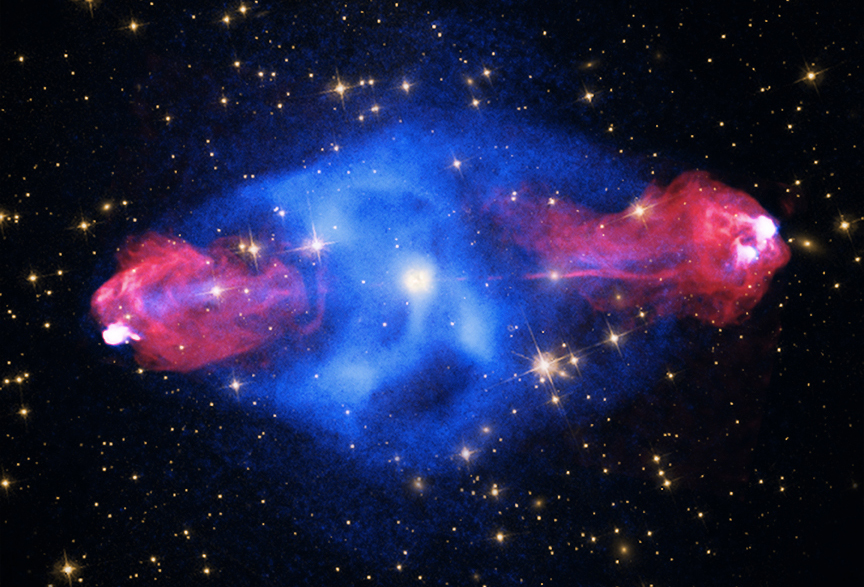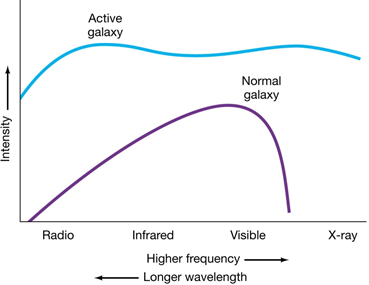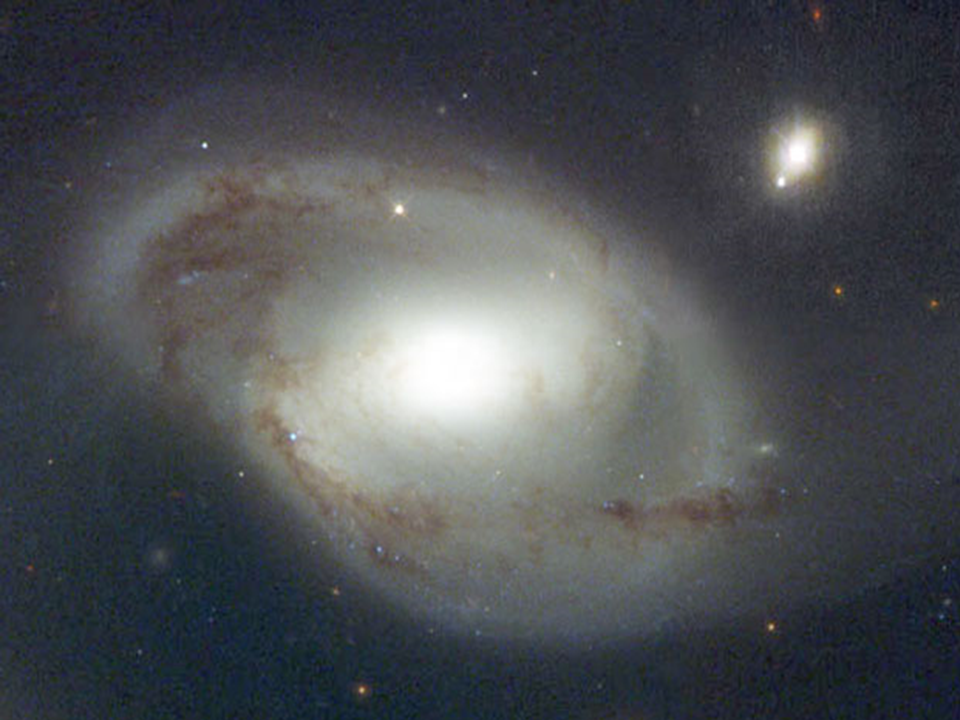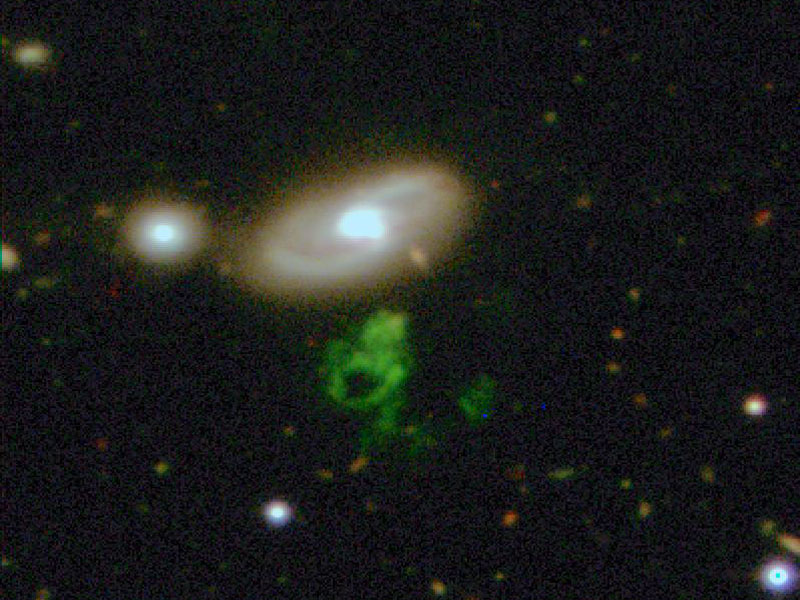PH 207 topics
Active galaxies


© 2005 Pearson Prentice Hall, Inc
Active galaxies are more luminous than normal galaxies, and their light signatures do not tend to follow blackbody radiation curves. The emit more light in all wavelengths, especially in the low wavelength and high wavelength regions. This is because much of their light is not created via fusion from stars, it comes from activity in the nucleus. Two important classes of galaxies with active nuclei are known as Seyfert galaxies and radio galaxies.
Seyfert galaxies

Seyfert galaxies typically look like normal spiral galaxies when viewed in visible light, but the nucleus can be extremely bright, often brighter than our whole Milky Way galaxy. The reddish jets of glowing hydrogen gas in the Seyfert galaxy shown above are indications of the source of activity in the nucleus, the active supermassive black hole, which has a great deal of matter falling into it. Supermassive black holes lie at the center of all galaxies, but they are usually quiet. Even though their gravitational force is very strong, most stars just orbit the black hole like any other gravitating object. When something has happened in the galaxy to disrupt the normally stable orbits of the stars, though, some stars can move dangerously close to the central black hole. When they do, the gravitational force of the black hole is so much stronger than the gravity holding the star together that the star is torn apart and forms into a big glowing disk of matter surrounding the black hole. As the matter falls into the black hole, it becomes super-heated and some of the matter is ejected along the rotational axis along the magnetic field lines.
Another important fact about Seyfert galaxies is that their luminosity can fluctuate rather rapidly, even over the span of a year. This means that the object that is fluctuating must be rather small, compared to the size of the galaxy, as small as one light year across. This is further evidence that the object driving the luminosity must be very compact, like a supermassive black hole.
Radio galaxies

The above is an x-ray image of the central region of the radio galaxy, Centaurus A. Radio galaxies actually show very short peak wavelengths, but their radio emissions allow us to probe the structures like the immense lobes seen in Cygnus A, at the top of the page. The light signatures from radio galaxies are much more extended than the Seyfert galaxies. The high energy x-ray light from the nucleus encounters gas as it expels from the center of the galaxy, being repeatedly absorbed and re-emitted. This absorption and re-emission tends to lower the energy of the photons, producing the extended lower wavelength radio light we see in the lobes. Some radio galaxies appear more core-dominated, but it is likely that the galaxy happens to be positioned such that we are looking inward along the radio lobe. Some galaxies are rotated just right to have their jets pointed straight at us, so that the light is extremely intense. We call them blazars, since they are so bright.

"Quasar" is short for quasi-stellar, or "something like a star. Quasars are small bright objects like stars, but with huge redshifts. This means that they must be extremely luminous, to be visible from so far away. They are the brightest objects in the universe, with luminosities as high as a thousand Milky Way galaxies. The closest quasar is 240 Mpc away, which means that they existed in an earlier time, when the universe was younger. The theory is that they are supermassive black holes being formed in a time when many small galaxies were merging to form larger galaxies. Typically, the light we see from quasars was emitted before the Earth was even formed. The above image shows a faraway quasar appearing adjacent to a much closer galaxy. The brightness of the quasar is similar to that of the galaxy, even though it is billions of light years farther away.

What is this strange green object? It is called Hanny's Verwoorp, and was discovered by a volunteer classifying galaxies via the Galaxy Zoo on the Zooniverse citizen science website. No one knows just what it is (verwoorp is Dutch for "object") but one leading theory is that it is a small galaxy acting like a reflection nebula for a quasar.
Image source
Some galaxies exhibit much more activity than "normal" galaxies, like Cygnus A, shown above. The nucleus of the galaxy is extremely bright. The blue part of the image shows the highly energetic x-ray light emitted from the galaxy. The huge jets of relativistic gas are imaged in red, showing the radio emission of the galaxy.